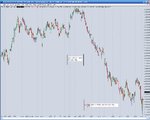fxmarkets
Established member
- Messages
- 834
- Likes
- 50
Life, evolution, god, time, and a very big thermonuclear weapon etc (philosophy)
hmmm, I was reading 7'ths thread and the debate on trends, needs to be a past etc... this got me thinking of time, trading price, trend of price without time , is trend absolutely bound by time ,P+F, trading @ price, exiting @ price increase trend excluding time, just knowing the numbers etc.. does time exist anyway....... etc thinking about it and researched time theory in the browser , anyway came across this site which i havent finished reading but enjoying it.
on trends, needs to be a past etc... this got me thinking of time, trading price, trend of price without time , is trend absolutely bound by time ,P+F, trading @ price, exiting @ price increase trend excluding time, just knowing the numbers etc.. does time exist anyway....... etc thinking about it and researched time theory in the browser , anyway came across this site which i havent finished reading but enjoying it.
Its a fanfare intro but not a heavy read...
Welcome to the full novel of Philosophy. A masterpiece of philosophical thought, from the beginning of creation, to the end of time, and everything in between. In this book you will find philosophy on the birth of creation, the crucible of time, the end of the world. This work also includes how the universe came in to being, how you can have a God, the birth of our planets and the construction of solar systems. We explore the extinction of dinosaurs, the theory of evolution and whether there is other life out there. Do UFOS visit Earth? Is there life on Mars? How do the Ten Commandments play a role in our lifes? All this and more we'll seek to discuss and debate.
http://web.ukonline.co.uk/pmcrowley/index.html
if anyone has any links to share of this nature please stick em on
cheers
Fx.
hmmm, I was reading 7'ths thread and the debate
Its a fanfare intro but not a heavy read...
Welcome to the full novel of Philosophy. A masterpiece of philosophical thought, from the beginning of creation, to the end of time, and everything in between. In this book you will find philosophy on the birth of creation, the crucible of time, the end of the world. This work also includes how the universe came in to being, how you can have a God, the birth of our planets and the construction of solar systems. We explore the extinction of dinosaurs, the theory of evolution and whether there is other life out there. Do UFOS visit Earth? Is there life on Mars? How do the Ten Commandments play a role in our lifes? All this and more we'll seek to discuss and debate.
http://web.ukonline.co.uk/pmcrowley/index.html
if anyone has any links to share of this nature please stick em on
cheers
Fx.
Last edited:


